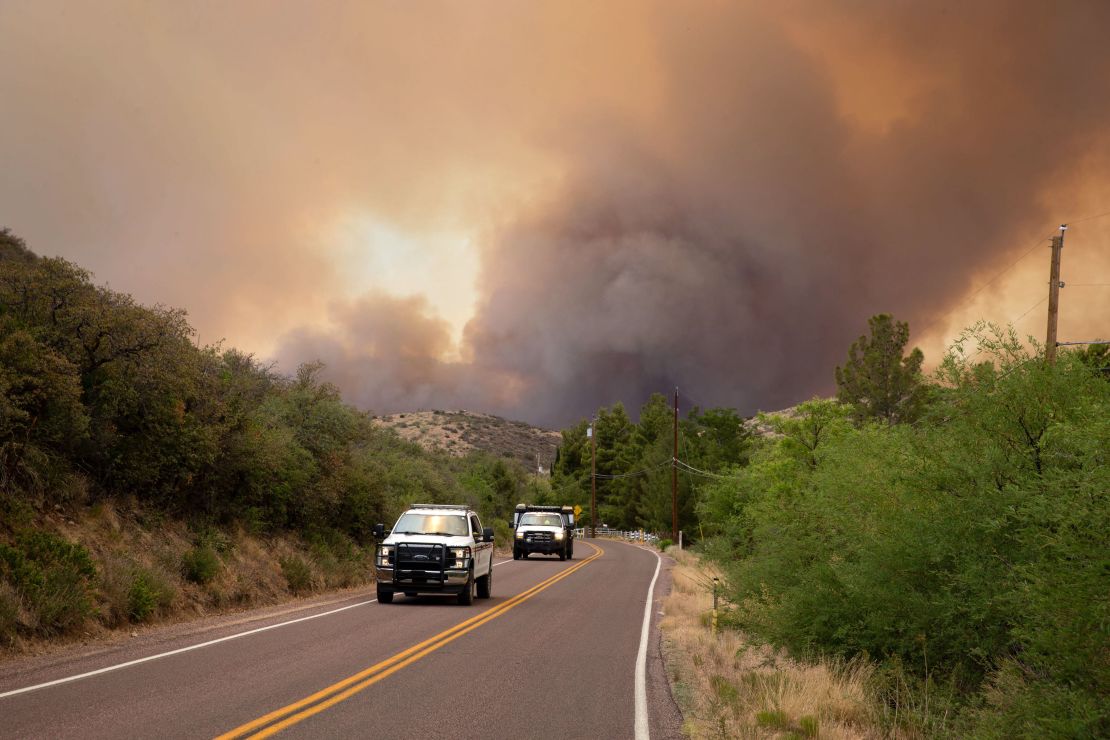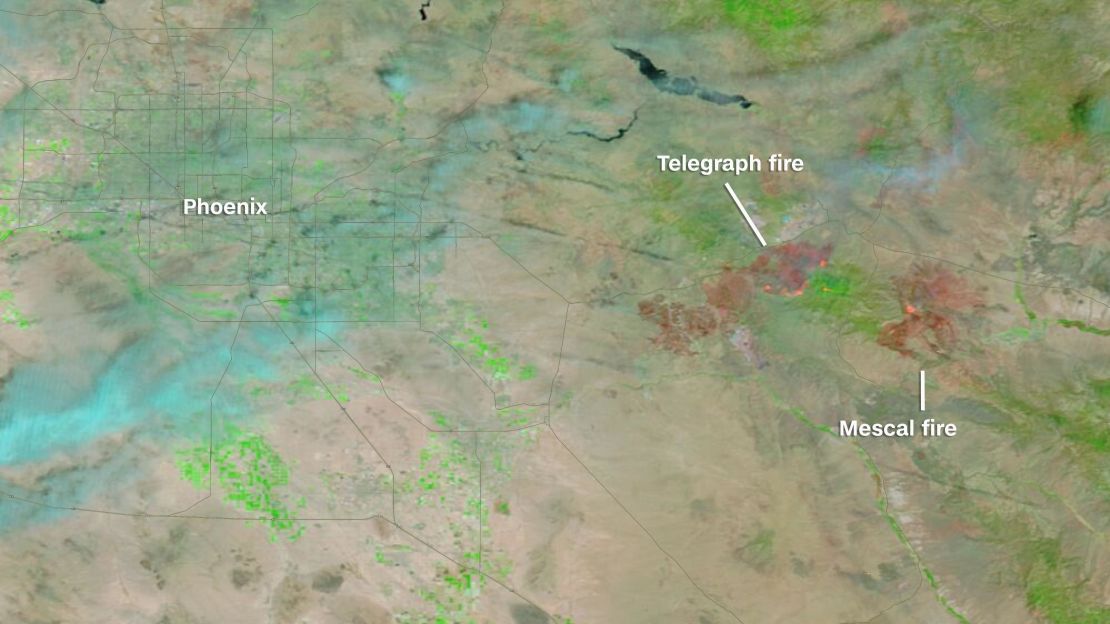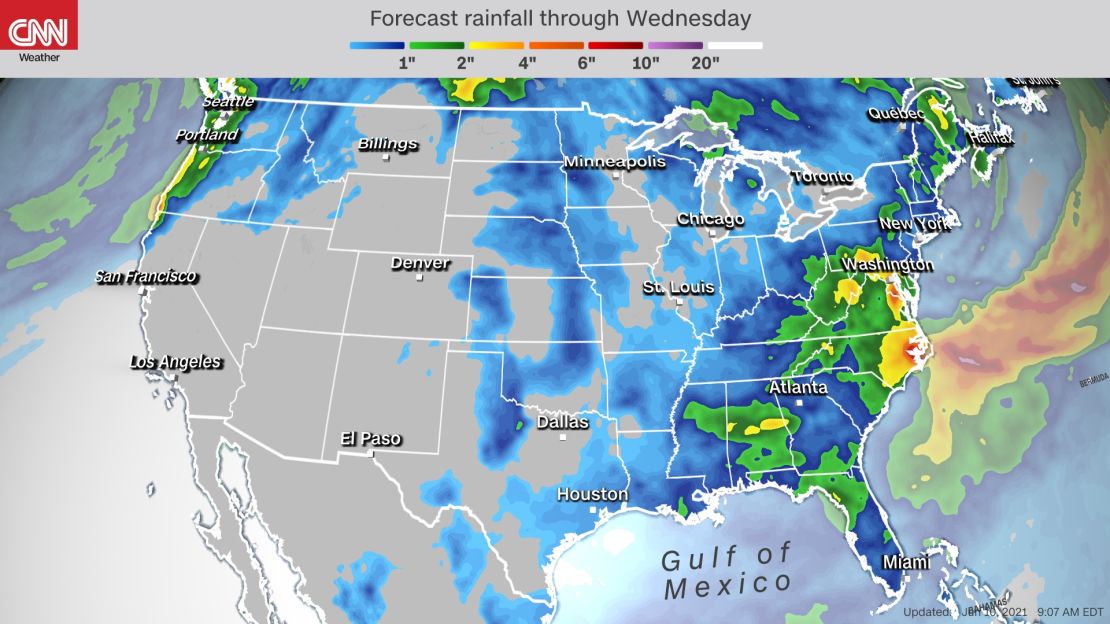So far this year, there have been 326 wildfires in Utah, 42 of which started in just the last week. Since May 17, at least one has ignited every single day, state officials said. And 90% of the fires have been human-caused, leading to over 12,000 acres burned.
Now, increased winds will set the stage for the further spread of these fires. Above-normal fire potential is also predicted for June and July for the entire state as hot and dry conditions are expected to persist.
Critical fire weather conditions exist Thursday across more than half a dozen states, including Arizona, where two massive wildfires are growing. Also alarming is the extreme level fire weather conditions – the highest category – in eastern Utah and western Colorado.
“Depending on where you are, wind gusts today are on the border of 40 mph, upwards of 60 mph possible,” said Kris Sanders, senior meteorologist at the National Weather Service (NWS) at Grand Junction. “A lot of the higher winds are going to be in the far northwest part of Colorado and the far northeast part of Utah, stretching down maybe towards the I-70 corridor.
“Along with that, it’s going to be very dry conditions. We’re already starting the day out with low humidity, and relative humidity is going to get into the single digits, which is not good,” Sanders said. “If you get a fire in this environment, it’s only going to grow rapidly.”
Widespread winds are expected in the 20- to 30-mph range, with relative humidity hovering in the range of 6% to 12% range.
“These winds and relative humidities suggest that meteorological conditions will likely exceed extremely critical criteria,” the Storm Prediction Center cautioned. “In addition, fuels in the area are extremely dry.”
More than half a dozen Western states have at least one ongoing wildfire that has burned over 1,000 acres. And nearly 27,000 fires have started across the US this year, burning more than 833,000 acres.

California alone has seen nearly 3,000 fires this year, well above its average of 1,500 by this time of the year.
Twenty large fires are now burning across the US, with two of the largest ones still growing in Arizona.
Arizona has 2 big fires
Two massive wildfires – the Telegraph Fire and the Mescal Fire – are raging across Arizona, spurring Gov. Doug Ducey to make two emergency declarations Wednesday.
“Arizonans must take the threat of wildfires seriously and follow all safety precautions during these dry months, including following evacuation orders,” Ducey said in a statement.

Both fires are just east of Phoenix, and the forecast for this region does not bode well for firefighters or residents.
“Out by the fires today, we’re looking at temperatures in the mid- to upper 90s,” said Sean Benedict, meteorologist with the NWS office in Phoenix. “With this time of year with the very low humidity, we’re looking at afternoon relative humidity percentages below 10%.
“That together has been fueling the elevated fire weather conditions we’ve been seeing, and also we typically will see these breezy conditions each afternoon.”
Sustained winds between 10 and 20 mph, with gusts up around 30 to 35 mph, are possible. These may not sound like very strong winds, but remember: It doesn’t take much wind to spread an ongoing fire.
“The one thing that will be changing as we head into the weekend and even into early next week is the temperatures will really start to push up,” Benedict said. “That’s going to lead to even lower relative humidity. We’re looking at temperatures reaching near records by the middle of next week.”
The most important aspect of the forecast is there’s no rain in sight. Over the next seven days, no rain is forecast for most of Arizona, Colorado, Nevada, California, New Mexico and Utah.

Drought is driving the fires
One hundred percent of Utah, Nevada, Oregon, and California is under at least a level 1 drought conditions or worse, but only one of those states – Oregon – is expected to see rain over the next few days. All others are expected to remain very dry.
This is especially concerning since the soil moisture and fuel moisture levels are already very low. This means under the right conditions, fire ignition can start very easily.
“For today – even across the western areas, while the winds aren’t terribly strong – with the warmer temperatures and dry fuel, we do have red flag in effect,” said Sharon Sullivan, meteorologist at the NWS in Albuquerque, New Mexico. “We will see temperatures on the upward trend, drier fuel and dry conditions overall with the single digit relative humidities.”

